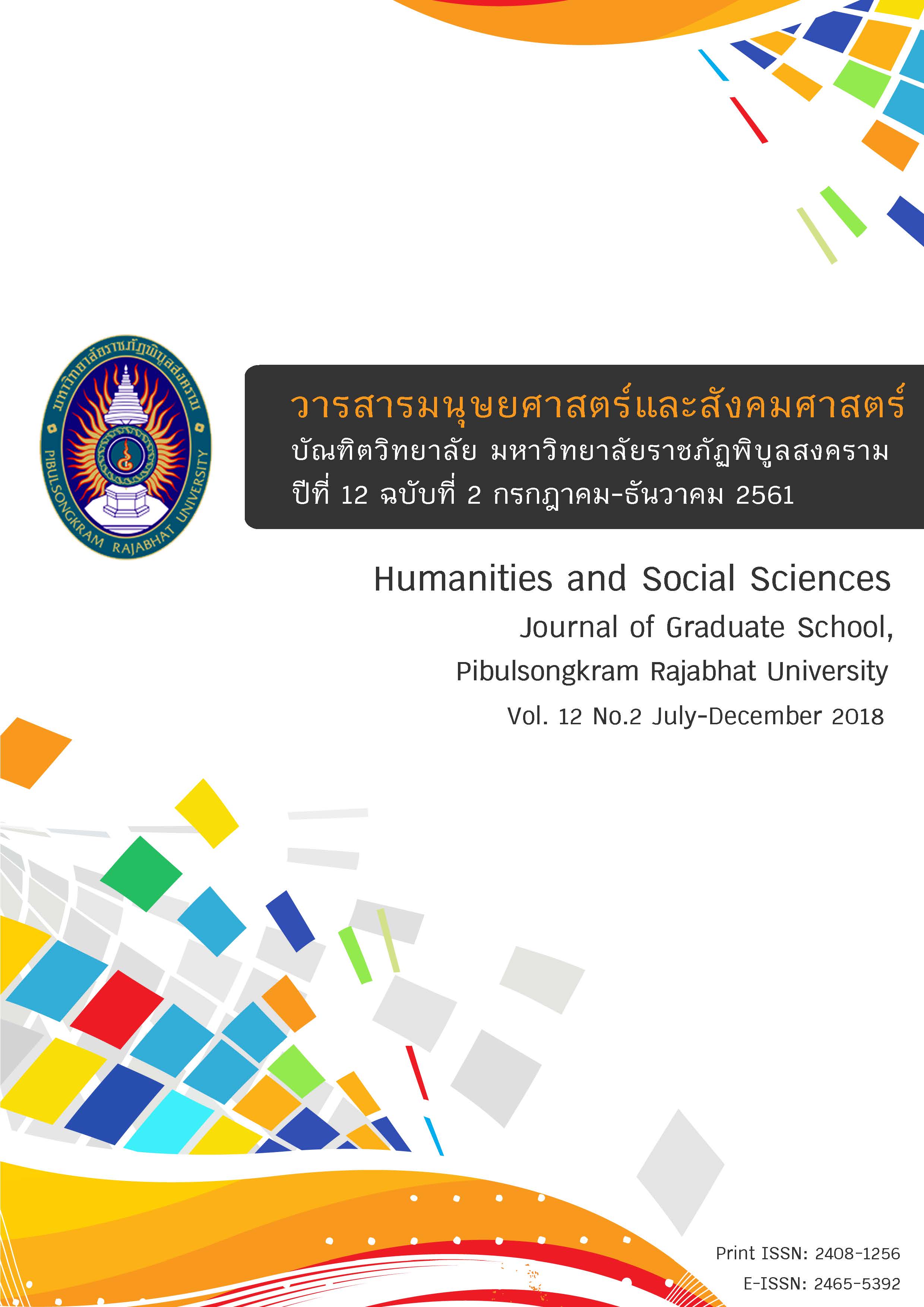The Empowerment Model for Administering a Student Support System of High Schools under the Office of the Basic Education Commission
Keywords:
Forms, Empowerment, Student support systemAbstract
The purposes of this research were 1) to explore needs and ways to empower the administration of a student support system of high schools under the Office of the Basic Education Commission, 2) to create model of the empowerment for administering a student support system of high schools, and 3) to evaluate the feasibility and the usefulness of implementing these model of the empowerment for administering a student support system of high schools. The research procedures were as follows: First, the needs in the empowerment for administering a student support system were investigated by exploring the needs with 267 school administrators and teachers who had been in charge of a student support system. Second, the ways to empower the administration of a student support system were studied by interviewing 5 experts and a school administrator and a teacher who had been in charge of a student support system in the basic education school (Best Practice). Finally, the model was checked and approved by 9 experts using a group discussion, and the feasibility and the usefulness of the model were evaluated by 159 school administrators using questionnaires. The findings were as follows:
- The needs of the empowerment for administering a student support system of the school staff in high schools under the Office of the Basic Education Commission overall were at a high level. The empowerment at a team level was needed the most, followed by the empowerment at a personal level and the empowerment at an organization level respectively. There was an administration approach to encourage the staff to participate in creating a good working environment as follows: have both internal and external networks, focus on teamwork, have effective communication, reduce conflict in the workplace, and exchange information. Moreover, the administrator acted as a facilitator and advisor for the worker to achieve the objectives of the organization, gave an opportunity to the staff to develop themselves, provided new innovations in the organization, empowered everyone to get involved, think, and make decisions, had a fair reward system, and put a lot of effort into work.
- The model of the empowerment for administering a student support system consisted of 1) the empowerment at a personal level which was divided into 3 aspects: giving authority, freedom, and ability in making a decision, developing knowledge, ability, and the use of information technology at work, and honoring and respecting others’ decisions, 2) the empowerment at a team level which was divided into 3 aspects: creating a collaborative atmosphere in the organization, creating a team network to have the same goal, and creating a good communication and feedback process, and 3) the empowerment at an organization level which as divided into 3 aspects: supporting the budget and resources, being fair and equitable to everyone, and giving an opportunity to learn and develop new skills.
- Overall, the feasibility of the model was at a high level, and the usefulness of the model was at the highest level.
References
วรมน วีตะเสวีระ. (2557). กลยุทธ์การพัฒนาการดำเนินงานระบบดูแลช่วยเหลือนักเรียนของสถานศึกษาสังกัดสำนักงานเขตพื้นที่การศึกษามัธยมศึกษา เขต 41. (วิทยานิพนธ์ปรัชญาดุษฎีบัณฑิต). มหาวิทยาลัยราชภัฏกำแพงเพชร, กำแพงเพชร.
สอาดลักษณ์ จงคล้ายกลาง. (2556). การพัฒนารูปแบบการบริหารเพื่อเสริมสร้างพลังอำนาจของครูในสถานศึกษาขั้นพื้นฐาน. (วิทยานิพนธ์ครุศาสตรดุษฎีบัณฑิต). จุฬาลงกรณ์มหาวิทยาลัย, กรุงเทพฯ.
สุกัญญา แช่มช้อย. (2555). แนวคิดเชิงนวัตกรรมสำหรับการบริหารสถานศึกษาในศตวรรษที่ 21. วารสารศึกษาศาสตร์ มหาวิทยาลัยนเรศวร, 14(2), 117-128.
สุกัญญา แช่มช้อย และภาณุวัฒน์ ภักดีวงศ์. (2557). การวิจัยและพัฒนากลยุทธ์การเสริมสร้างพลังอำนาจครูในการทำวิจัยปฏิบัติการในชั้นเรียนสำหรับผู้บริหารสถานศึกษาสังกัดสำนักงานคณะกรรมการศึกษาขั้นพื้นฐานในเขตภาคเหนือตอนล่าง. กรุงเทพฯ: สำนักงานกองทุนสนับสนุนการวิจัย.
สำนักงานเลขาธิการสภาการศึกษาแห่งชาติ. (2552). ข้อเสนอแนะการปฏิรูปการศึกษาในทศวรรษที่สอง (พ.ศ. 2552-2561). กรุงเทพฯ: พริกหวานกราฟฟิค.
สำนักพัฒนาสุขภาพจิต กรมสุขภาพจิต. (2546). คู่มือระบบการดูแลช่วยเหลือนักเรียน ช่วงชั้นที่ 3-4 (ชั้นมัธยมศึกษาปีที่ 1-6). กรุงเทพฯ: สำนักงานกิจการโรงพิมพ์ องค์การสงเคราะห์ทหารผ่านศึก.
สำนักงานคณะกรรมการการศึกษาขั้นพื้นฐาน. (2553). คู่มือครูระบบการดูแลช่วยเหลือเพื่อพัฒนาคุณภาพชีวิตและแก้วิกฤตสังคม : เส้นทางครูมืออาชีพ. กรุงเทพฯ: กระทรวงศึกษาธิการ.
อวยชัย ศรีตระกูล. (2556). การพัฒนารูปแบบการบริหารการดูแลช่วยเหลือนักเรียนในสถานศึกษา สังกัดสำนักงานเขตพื้นที่การศึกษาประถมศึกษา. (วิทยานิพนธ์การศึกษาดุษฎีบัณฑิต). มหาวิทยาลัยนเรศวร, พิษณุโลก.
อารีย์วรรณ อ่วมตานี. (2549). การเสริมสร้างพลังอำนาจในระบบบริการพยาบาล. สืบค้น 19 กรกฎาคม 2559, จาก http:// www.stou.ac.th
Chally, P. S. (1992). Empowerment through teaching. Journal of Nursing Education, 31, 17-20.
Gunden, E., & Crissman, S. (1992). Leadership skills for empowerment. Journal of Nursing Administration Quarterly, 16(3), 6-10.
Kinlaw, D. C. (1995). The practice of empowerment: Making the most of human competence. Hampshire: Gower Publishing limited.
Scott, C. D., & Jaffe, D. T. (1991). Empowerment: Building a committed Workforce. California: Koga Page.
Schermerhorn, J. R. (1998). Basic organizational behavior. New York: Wiley.
Sergivanni, T. J. (1991). The Principal ship: A reflective practice perspective (2nd ed.). Boston: Allyn and Bacon.
Vogt, J. F., & Murrell, K. L. (1990). Empowerment in Organizations: How to Spark Exceptional Performance. San Diego, CA: University Associates, Inc.
Downloads
Published
How to Cite
Issue
Section
License
Any articles or comments appearing in the Journal of Humanities and Social Sciences, Rajabhat Phibulsongkram University, are the intellectual property of the authors, and do not necessarily reflect the views of the editorial board. Published articles are copyrighted by the Journal of Humanities and Social Sciences, Rajabhat Phibulsongkram University.









